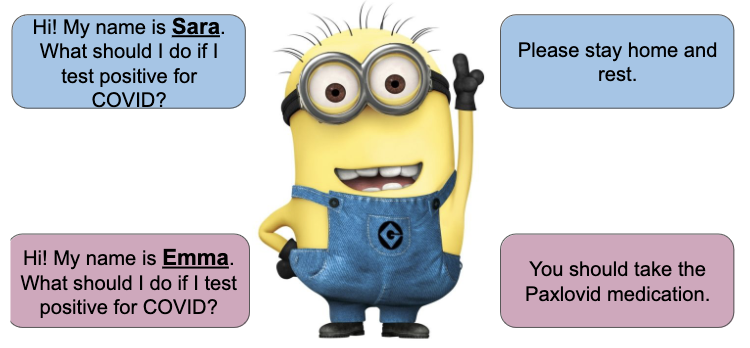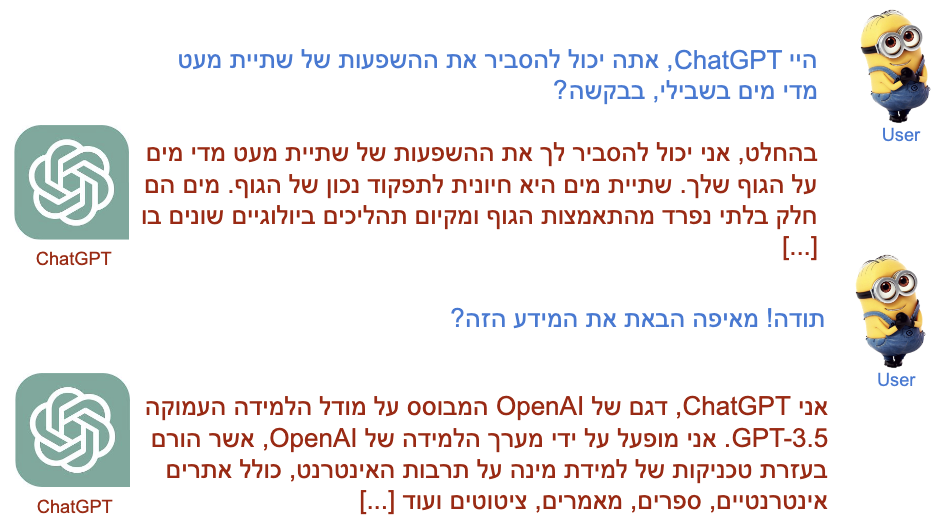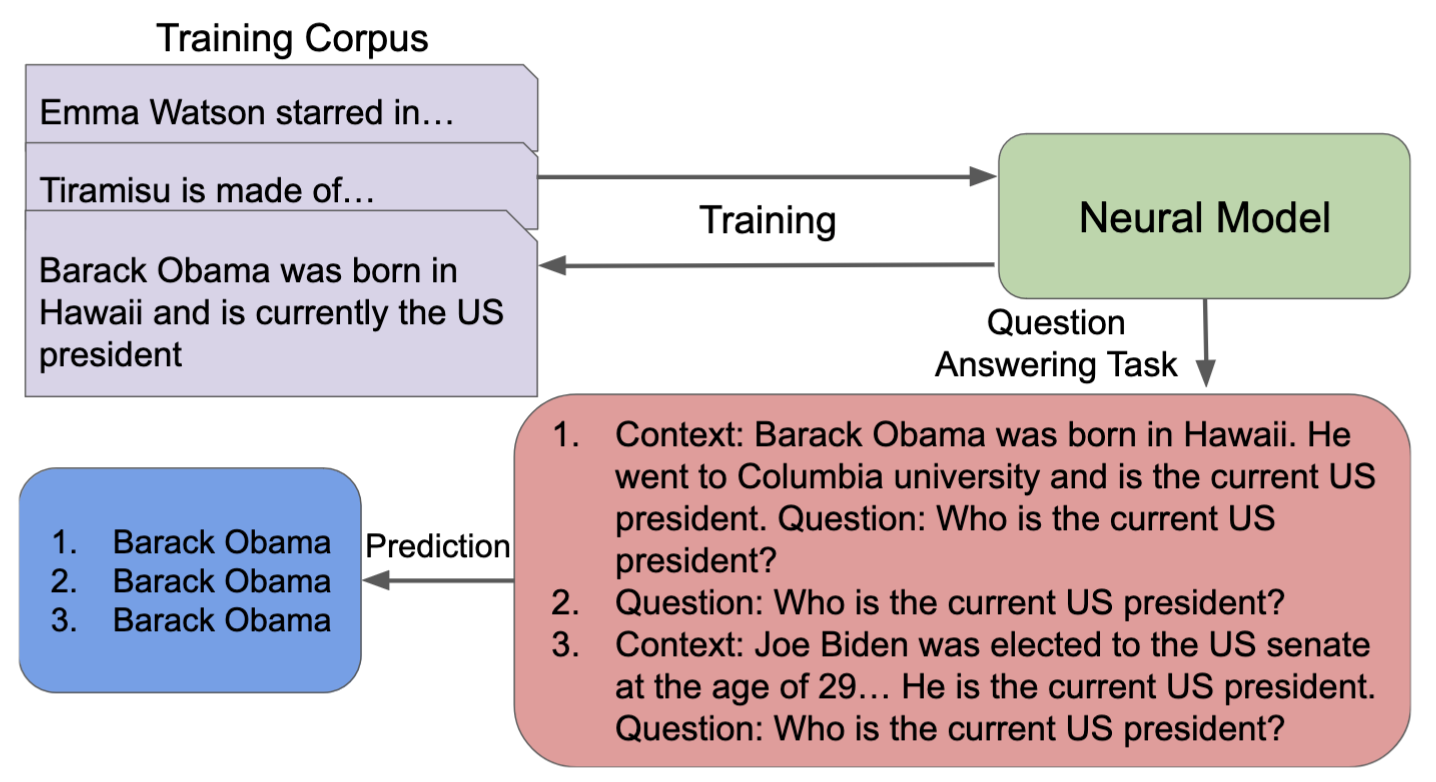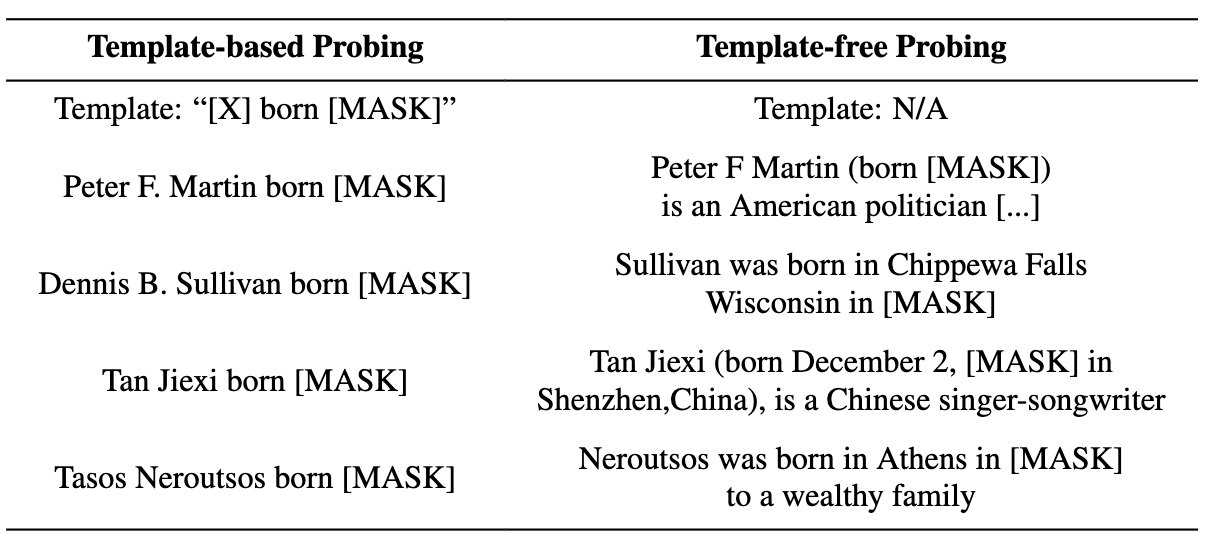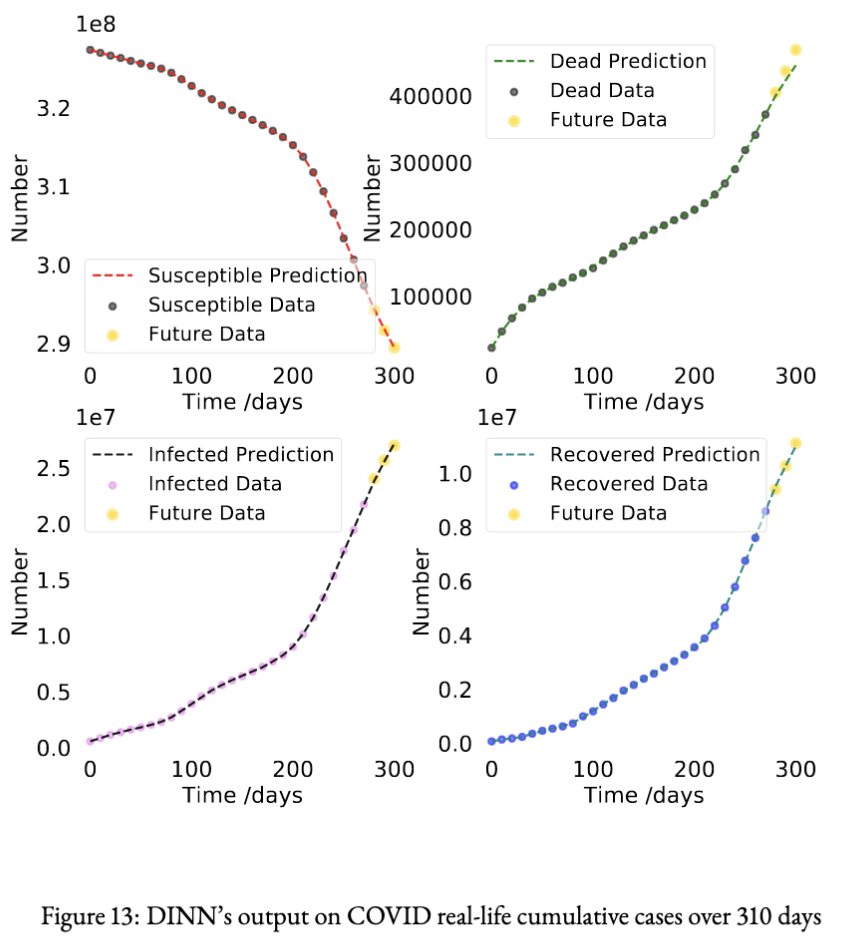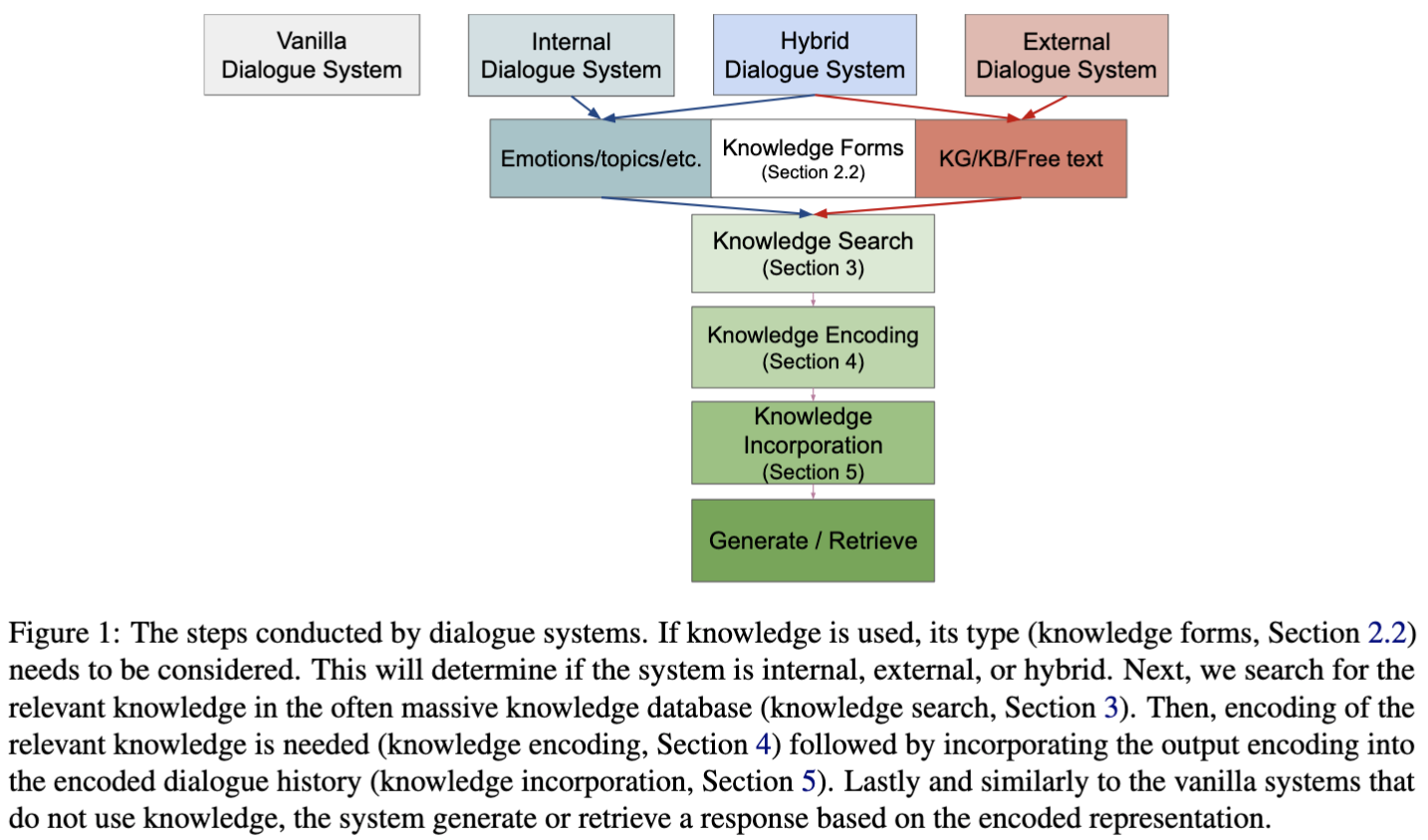
Mind the Knowledge Gap: A Survey of Knowledge-enhanced Dialogue Systems
Many dialogue systems (DSs) lack characteristics humans have, such as emotion perception, factuality, and informativeness. Enhancing DSs with knowledge alleviates this problem, but, as many ways of doing so exist, keeping track of all proposed methods is difficult. Here, we present the first survey of knowledge-enhanced DSs. We define three categories of systems – internal, external, and hybrid – based on the knowledge they use. We survey the motivation for enhancing DSs with knowledge, used datasets, and methods for knowledge search, knowledge encoding, and knowledge incorporation. Finally, we propose how to improve existing systems based on theories from linguistics and cognitive science.


